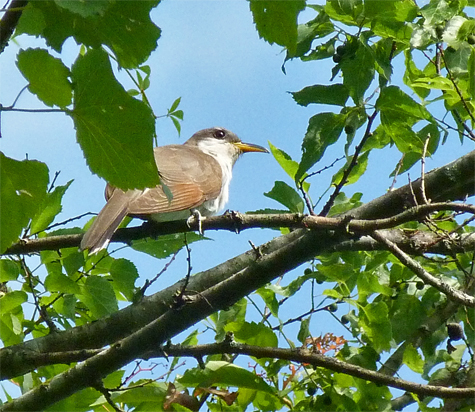
There are three cuckoos in the east, mangrove, black-billed, and yellow-billed. You’d be lucky to see a mangrove cuckoo in its restricted range in Florida, you will not see one here in Durham, NC. Some would say that the other two cuckoos might just as well be restricted to the mangroves of Florida, it’s tough getting a glimpse at either black-billed or yellow-billed here at the Museum.
I’ve seen a black-billed here only once, and that was during migration. It was just a very brief look as the bird whizzed past me on its way from one clump of trees to another. That’s often how one sees cuckoos, when they’re making haste for one group of trees from another. They don’t seem to like being out in the open for long, hence the urgency when moving from tree to tree. They tend to skulk around in the trees peering under leaves and limbs for caterpillars, no quick movements, but slow methodical searching in the leaves for big juicy caterpillars.
I’ve never heard a black-billed cuckoo call at the Museum, but I ocassionally hear yellow-billeds. They don’t, though, seem to find there’s enough food for them to stay and nest on our little 84 acres, so I was surprised to hear one call a few weeks ago. Hearing a cuckoo and seeing one is not the same thing. Oh, the bird was here alright, there’s little doubt that I heard it. It’d be difficult to mistake the ka-ka-ka-ka-ka-ka-ka-kaow-kaulp-kaulp-kaulp-kaulp for anything but a y-b cuckoo. It’s not, though, always easy to spot the hunch-shouldered skulkers.
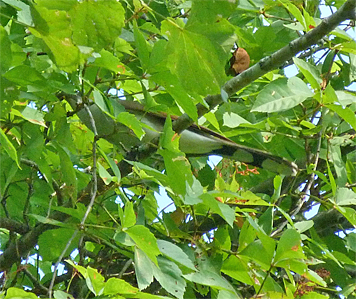
The yellow-billed cuckoo in the photo was generous with its time, you often don’t get that much of a look at the birds.
This past week, some of the sharp-eyed summer campers in the Adventure On troop, under the leadership of Wayne and Shealyn, spotted a large hornworm munching on a sapling in Catch the Wind.
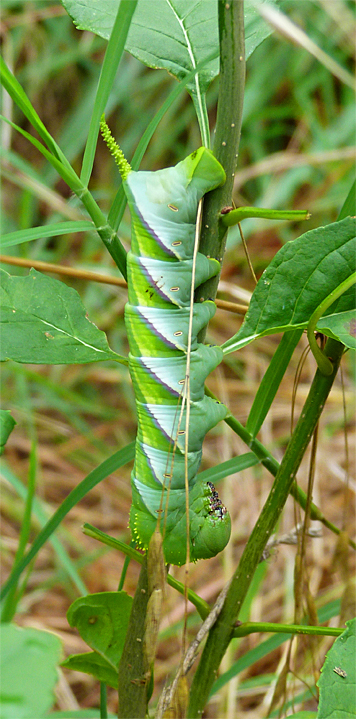
Hornworms are sphinx moth caterpillars. There are some 70 species in the east. If you have a vegetable garden you may be familiar with the Tobacco and Tomato Hornworms, both enjoy munching on tomato plants.
I didn’t know which sphinx moth we were looking at, the campers and I, but a quick search through Caterpillars of Eastern North America indicated it was a Rustic Sphinx (Manduca rustica).
Most sphinxs are fairly large. The caterpillar in the photo was well over 3 inches in length. And, they are typically quite attractive, if you like big, juicy caterpillars. Lavenders, blues, greens, yellows, and white combine and blend into a very appealing pattern on this caterpillar. Most of the hornworms have chevrons, slash marks or some other highlighted lines on the sides, but the markings seem to stand out much more on rustica.
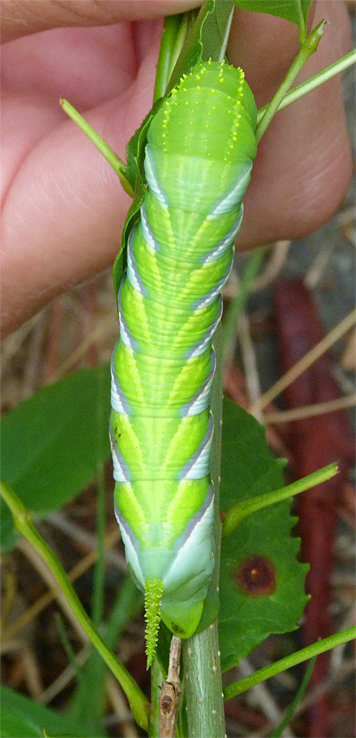
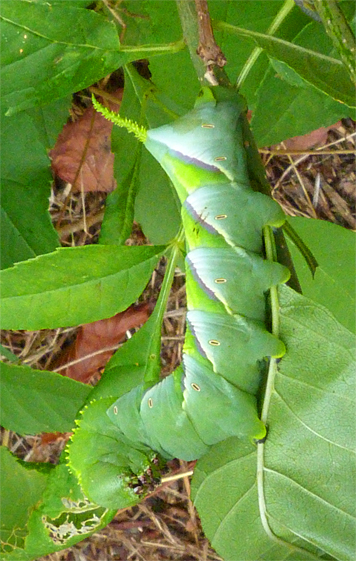
Keep a sharp eye, and ear, out while you trek the trails here at the Museum, you may be walking right past some very interesting creatures. Oh, if you do find something interesting, and you’re not quite sure what it is, hunt me down, I love a mystery.
We had these in the Carolina Pavilion a few years back. The adult is quite pretty too.